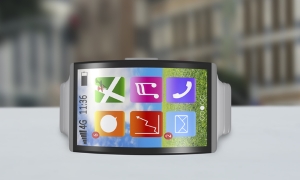Sign up for our free daily newsletter
YOUR PRIVACY - PLEASE READ CAREFULLY DATA PROTECTION STATEMENT
Below we explain how we will communicate with you. We set out how we use your data in our Privacy Policy.
Global City Media, and its associated brands will use the lawful basis of legitimate interests to use
the
contact details you have supplied to contact you regarding our publications, events, training,
reader
research, and other relevant information. We will always give you the option to opt out of our
marketing.
By clicking submit, you confirm that you understand and accept the Terms & Conditions and Privacy Policy
If creativity is a wild mind and a disciplined eye, as poet and writer Dorothy Parker reportedly said, the appeal of using generative AI (GenAI) to create marketing copy is obvious.
In the past year, the fashion and retail industry has been busy experimenting with GenAI to help create marketing campaigns and personalised advertisements. Given its enormous potential to unlock time and money savings, we believe this trend will continue and become ubiquitous in fashion and retail. However, brands should carefully consider GenAI’s impact on intellectual property protections, such as copyright.
Translating the US Copyright Office’s guidance
For American luxury brands, the first step in understanding protectability is reviewing the US Copyright Office’s guidance on using GenAI.
The Copyright Act protects original works of authorship, and this has long been interpreted to mean human authorship. On the tail of GenAI tools entering the marketplace, the Copyright Office issued guidance for registering works containing materials generated by artificial intelligence (AI). Specifically, it reiterated that copyright protects “only material that is the product of human creativity”. For works with AI-generated content, only the human-created parts may qualify for copyright protection if they contain sufficient creativity. Determining protectability is established on a case-by-case basis and depends on GenAI’s function and use in the creation process.
Applying that case-by-case approach, the Copyright Office refused to register an AI-generated image titled “Théâtre D’opéra Spatial”:

To create the work, the artist input more than 600 text prompts to Midjourney – an AI image generator program – to arrive at the initial version of the image, which he subsequently edited using Adobe Photoshop and Gigapixel AI. The Copyright Office held that the artist’s text prompts only “influence[d]” what GenAI generated, and that the traditional elements of authorship were determined and executed by the program.
What does this then mean for the use of GenAI in developing marketing campaigns?
The Copyright Office’s decisions, including subsequent decisions on the Zarya of the Dawn comic book and Suryast two-dimensional artwork, shed light on the following common uses of GenAI in the creative process.
Marketing’s collaboration with GenAI
Based on recent Copyright Office decisions, advertising campaigns created entirely through the use of GenAI tools may not be protectable with copyright even when they are the result of significant human input and selection. As the office noted, “guid[ing] the structure and content” of images is not sufficient, because it is the GenAI tool “that originate[s] the traditional elements of authorship” in the resulting generated images.
But can GenAI tools be used at all in the creative process and still result in a protectable end product? The Copyright Office’s current guidance provides some metes and bounds on this issue.
- Brainstorming marketing ideas – Brands are using GenAI tools to assist in brainstorming concepts for new marketing campaigns; in other words, exercising that wild creative mind that Ms. Parker identified. Post-brainstorming, if humans do the marketing design and development, then the resulting work is likely protectable. For example, if a brand uses GenAI to devise an intermediate image, and then a human makes substantive edits to it, the result may be deemed copyrightable.
- Drafting product descriptions and advertising copy – Brands are using GenAI to assist in drafting product descriptions and ad copy which may not be protectable. The Copyright Office looks at whether text is “written entirely by [human authors] without the help of any other source or tool, including any generative AI program”. In this scenario, GenAI is writing the text. But, since product descriptions may not be works a brand wants to protect, the gains obtained with GenAI’s productivity may outweigh the loss of protection.
- Creating different versions of a marketing campaign – Brands are using GenAI to create multiple versions of a campaign as a way to target different audiences or ad channels. This provides brands with more diversified options and formats than a single ad. Although the original advertising may be protectable depending on how GenAI was used in its creation, derivative versions of that campaign created with GenAI tools may not be. Specifically, where the use of GenAI expands beyond an assistive tool such as an editing software program, and the expressive elements of the derivative work are a result of how the GenAI “model works and the images on which it was trained”, the resulting work is not protectable.
Brands are well underway in recognising the value GenAI offers. For certain tasks, GenAI can advance the creative process and still allow for copyright protection. But based on the guidance from the Copyright Office, brands must be prepared for results that may not be entirely, or at all, protectable.
Hogan Lovells’ partner Helen Trac represents technology companies on technologies encompassing consumer electronic devices as well as the tools used to design the integrated circuits within those devices. She can be reached at [email protected].
Senior associate Rebecca B. Horton specialises in intellectual property litigation. She can be reached at [email protected].
Email your news and story ideas to: [email protected]












